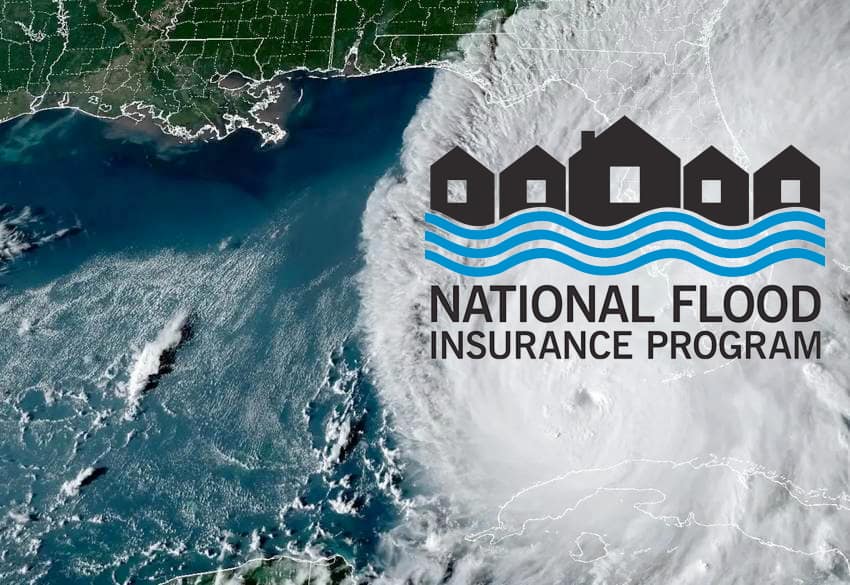Hurricane Helene may have caused damages exceeding $30 billion. Less than two weeks later, Hurricane Milton added nearly $50 billion more in losses. With only five weeks left in the hurricane season, the Small Business Administration’s disaster loan program has run out of funds. Meanwhile, several more tropical storms are forming over the Atlantic. So, who will bear the cost of all this?
Here's ads banner inside a post
Because private insurers generally find the flood insurance market unprofitable, the National Flood Insurance Program (NFIP) takes on the responsibility of providing flood coverage for homeowners — and this program is facing significant problems. The NFIP is managed by the Federal Emergency Management Agency (FEMA), the same agency battling misinformation and dealing with unexpected situations while trying to distribute much-needed aid to the victims of Helene and Milton.
This program provides nearly $1.3 trillion in coverage to more than 5 million policyholders. It is funded by premiums collected from policyholders but often has to borrow from the U.S. Treasury when claims it must pay exceed revenue, as is frequently the case. Congress canceled $16 billion in NFIP debt in 2017; since then, the program has borrowed billions more from taxpayers.
The Impact of the Disasters and the Need for Reform
If Hurricanes Helene and Milton illustrate how destructive hurricanes are becoming in a warming world, the NFIP’s financial troubles will only worsen. Yet, Congress has not made any fundamental reforms to the program since its inception nearly six decades ago. This cannot continue.
Here's ads banner inside a post
Congress created the NFIP when private insurers retreated from the flood insurance market after the first storm to cause $1 billion in losses — Hurricane Betsy in 1965. The government intervened with two conditions aimed at avoiding “moral hazard,” a phenomenon where insuring against a specific risk encourages more people to accept that risk. The government required communities to adopt land-use policies that discouraged development in flood-prone areas and mandated that homeowners pay “actuarially sound” premiums.
Consequences of Unsustainable Development
However, moral hazard took hold anyway, as developers and other real estate interests gamed the system to suppress premiums and permit building in low-lying areas and beachfronts exposed to storms. The result is that FEMA flood hazard maps, which determine current coverage, rely on outdated information so inaccurate that more than 40% of NFIP claims made from 2017 to 2019 were for properties outside official flood hazard zones or in areas that the agency had not mapped at all.
Heavily lobbied by interested industries, Congress has taken little action to rectify these long-standing issues that have festered for decades. Since the end of fiscal 2017, it has enacted 31 short-term NFIP reauthorizations, including the most recent extension through December 20. The one attempt at genuine reform in recent history — the Flood Insurance Reform Act of 2012 — would have ended subsidized rates for second homes and properties that repeatedly flooded. After Hurricane Sandy, however, coastal-state representatives reversed even these modest improvements.
Here's ads banner inside a post
Steps Forward and Viable Solutions
Despite congressional inaction, FEMA took one step in the right direction by implementing its Risk Rating 2.0 pricing methodology. The agency now uses data from private insurers to charge policyholders rates based on variables that more accurately assess flood risk. However, to remain solvent and continue providing coverage to homeowners, the NFIP needs larger-scale reforms that require legislative action.
Ideally, modern data collection and risk mapping should allow private insurers to resume issuing flood insurance rather than leaving the business entirely to the government. If this does not happen, Congress should at least reinstate the 2012 law’s bans on subsidized premiums for second homes and properties that have been rebuilt multiple times.
Improving Accuracy and Ensuring Financial Stability
As climate change increases risks to more areas, investing in updated flood maps would also bring a more suitable geographic region under the NFIP’s purview. This, in turn, would enable stronger enforcement of building standards and stricter flood-risk building requirements. Even if the private sector does not directly offer policies to consumers, more accurate pricing would help the NFIP appeal to private insurers, who might then share some of the risk by providing “reinsurance” — essentially, insurance protecting insurers, in this case, the NFIP, from high costs.
Still, premiums lag significantly behind risk assessments. Congress should empower FEMA to build on the Risk Rating 2.0 pricing model, adjusting rates to reflect actual risk. Yes, more accurate pricing might raise some homeowners’ premiums. But this necessary step will help the program become fiscally stable and provide coverage in the coming years.
It is simply unfair to ask the entire population to provide deep subsidies for properties that, by definition, only a portion of the population can occupy and enjoy. Immediate action is necessary to protect the future and ensure safety for everyone.

